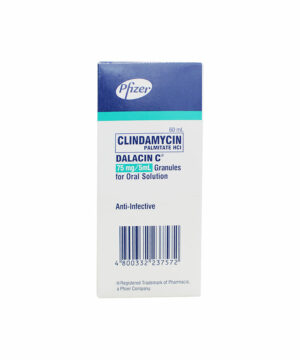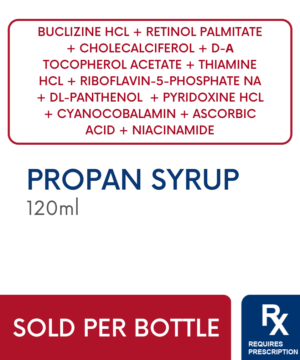Description
Bifix Tablet
Description : Each tablet contains rifampicin 150 mg, isoniazid 75 mg.
Indications / Uses : For the maintenance phase treatment of all forms of pulmonary and extrapulmonary tuberculosis.
Administration : Should be taken on an empty stomach: Take at least 1 hr before or 2 hr after meals.
Contraindications : Hypersensitivity to any of the rifamycins or to isoniazid.
Patients with previous isoniazid-associated hepatic injury or other severe adverse reactions to isoniazid (eg, drug fever, chills, arthritis and acute liver disease of any etiology).
Special Precautions :Rifampicin: Intermittent rifampicin therapy may be used if the patient cannot or will not self-administer drugs on a daily basis. Closely monitor patients on intermittent therapy for compliance and caution them against intentional or accidental interruption of prescribed therapy because of increased risk of serious adverse reactions.
Thrombocytopenia has occurred primarily with high-dose rifampicin intermittent therapy, but has also been noted after resumption of interrupted treatment. This effect is reversible if the drug is discontinued as soon as purpura occurs. Cerebral hemorrhage and fatalities have occurred when rifampicin administration was continued or resumed after the appearance of purpura.
As with any potent drug, periodic assessment of organ system functions, including renal, hepatic and hematopoietic, should be made during long-term therapy.
Isoniazid: Periodic ophthalmologic examinations during isoniazid therapy are recommended even when visual symptoms do not occur.
Pyridoxine administration is recommended in individuals likely to develop peripheral neuropathies secondary to isoniazid therapy. Prophylactic doses of 6-50 mg of pyridoxine daily have been recommended.
Use in pregnancy: Pregnancy Category C: Isoniazid exerts an embryocidal effect in both rats and rabbits, but no isoniazid-related congenital anomalies have been found in reproduction studies in mammalian species (mice, rats, and rabbits). The effect of rifampicin on the human fetus is unknown. Rifampicin crosses the placental barrier and appears in cord blood. An increase in congenital malformations, primarily spina bifida and cleft palate, has been reported in the offspring of rodents given oral doses of 150-250 mg/kg/day of rifampicin during pregnancy. When administered during the last few weeks of pregnancy, rifampicin can cause postnatal hemorrhages in the mother and infant for which, treatment with vitamin K may be indicated. Carefully weigh possible teratogenic potential in women capable of bearing children against benefits of therapy.













Reviews
There are no reviews yet.